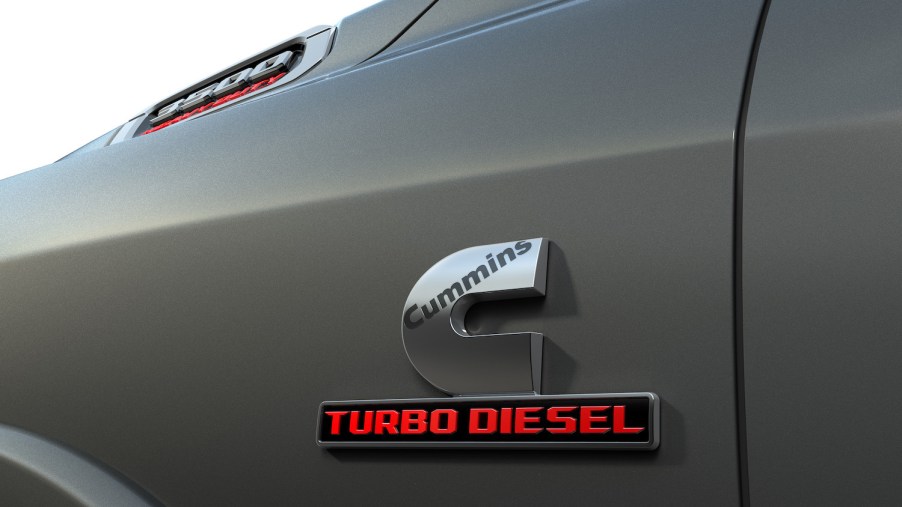
Cummins Is Ceasing All Sales to Russia
To condemn Russia’s violent invasion of Ukraine, many American companies–from John Deere to Pepsi–are refusing to do business with Russia. Recently, Cummins showed its support of the Ukrainian people by closing up its Moscow office and ceasing all diesel engine sales to Russia. But Cummins’ history with Russia, and the Russian military, is long and complex. Stopping business with Russia was also a complex process.
Cummins is a major global supplier of military engines

Cummins is an Indiana-based diesel engine company. It claims to power more tracked military vehicles than any other company in the world. The Russian military was once a client of Cummins, but it has been several years since Cummins last licensed any of its engines for military use in Russia –According to the 13 WTHR news channel.
The Cummins company first shipped diesel engines to Russia to use in mining trucks in the 1970s. The company’s business in Russia has grown in the past fifty years. Cummins supplied engines to over 30 OEMs in the civilian sector until last month.
In 2006, Cummins entered into a joint venture with a state-controlled company Vladimir Putin founded: KAMAZ. The Cummins-Kama joint venture builds licensed Cummins engines in Russia.
Also in 2006, Russia designed an all-new armored troop carrier–its own version of the Humvee. This vehicle, the GAZ Tigr, was engineered around Cummins’ 6BT engine, also found in Ram trucks. By 2017, GAZ began sourcing its engines elsewhere. But it is likely that many of the GAZ Tigrs used in Russia’s invasion of Ukraine are pre-2017, Cummins-powered vehicles.
Cummins has put a hold on all engine sales in Russia
As of March 17th, Cummins’ board of directors voted to cease all engine sales in Russia. The American company did not mince words taking a position on Russia:
“We strongly condemn the actions of the Russian government, which is putting millions of innocent people at risk and turning millions of Ukrainian citizens into refugees.”
Cummins’ statement
In addition, Cummins has said it is offering grants to Ukrainian refugees. This gesture echoes Stellantis’ one million Euro donation to refugees of the Russian invasion of Ukraine.
Cummins’ decision to cease sales in Russia still leaves a couple of question marks: Will the Cummins-Kama joint venture continue building engines in Russia? If Cummins orders the Kama factory to stop, but Putin orders it to continue production, does Cummins have any recourse?
The Cummins spokespeople have also expressed concern over the stability of the company’s 700 employees in Russia. John Deere closed its doors but is still paying its employees. There is no word yet how Cummins will handle the situation.
Why Cummins did not cease engine sales in Russia right away

When Russia first invaded Ukraine, I wrote several pieces detailing the brands of trucks and SUVs each side was driving. I found out that any of the Russian Humvee equivalents (GAZ Tigrs) transporting troops in Ukraine–which were built before 2017–were powered by Cummins 6BT engines.
I wrote up the GAZ Tigr and Cummins-Kama joint venture in an article titled “The Russian Army is Cummins Powered.“
Cummins launched a counter-campaign to argue that the Russian Army is “not Cummins Powered.” Spokespeople stressed that to the best of Cummins’ knowledge, none of its engines had gone into Russian military or defense vehicles in “years.” But this vague claim did nothing to refute my original argument.
Then Cummins made another odd assertion. Spokespeople added that the company would ship no engines over 400 horsepower to Russia to prevent unlicensed military use.
The claim is odd because none of the CUMMINS-powered Tigrs I wrote about made 400 horsepower anyway. Cummins engineers relatively low horsepower engines, having built its reputation on torque instead.
Finally, Cummins said that, unlike John Deere, it would not stop its sales to civilian OEMs. The company cited worrying about its Russian employees and disrupting peaceful Russian industries.
Then, on March 17th, Cummins changed its tune completely. See the channel 13 news announcement after Cummins took a stand:



